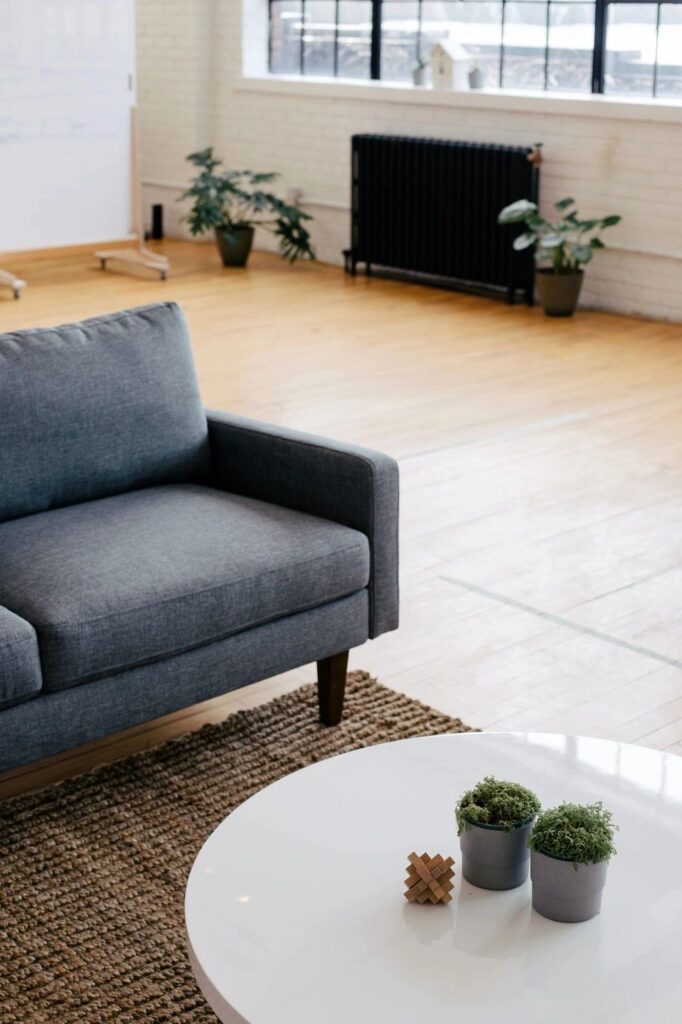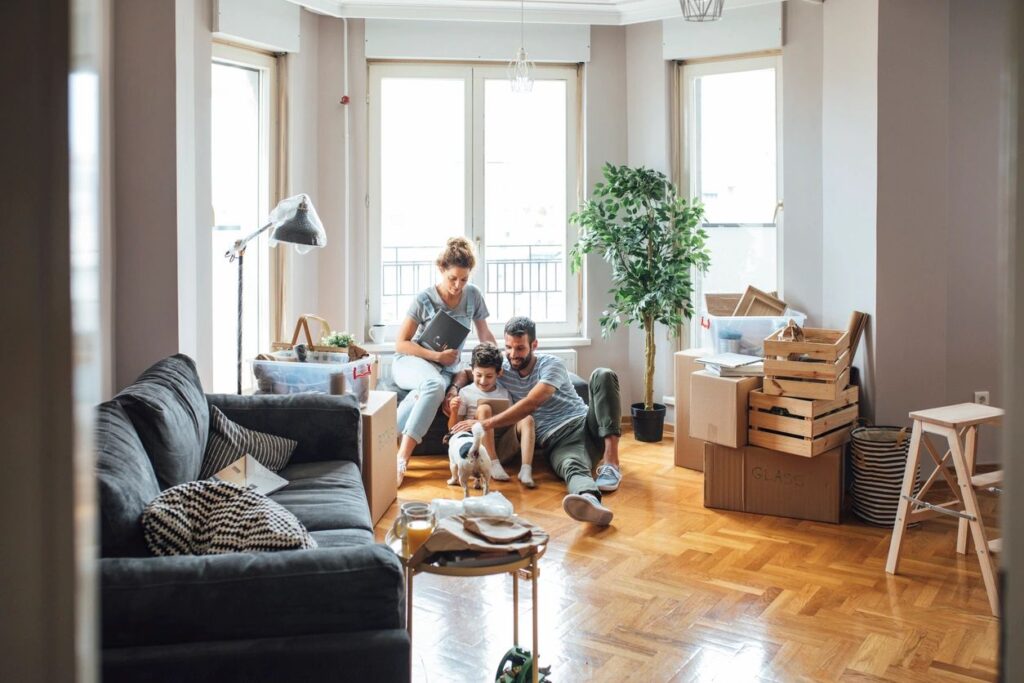🏡 First Home Buyer Guide
Everything You Need To Know About Buying Your First Home – Lendeez Guide
Buying your first home is one of the biggest financial decisions you’ll ever make. At Lendeez, we’re here to simplify the process and support you every step of the way, from planning and financing to moving in. Let’s break it down so you feel confident and empowered to take the leap into homeownership.

📍 Chapter 1: Set Clear Homeownership Goals
Build a Solid Foundation Before You Even Start House-Hunting
Buying your first home is an exciting milestone, but it can also be overwhelming if you don’t know where to start.
That’s why one of the most important (and often overlooked) steps is to take a step back and get clear on your personal goals. This early groundwork not only helps you make better decisions but can also save you a lot of time, money, and stress down the line.
Here’s how to set yourself up for success by defining your homeownership goals with clarity and confidence.
🗓️ Create a Realistic Timeline
Once you understand your motivations, set a realistic timeframe for when you’d like to purchase. For many first-home buyers, the ideal window is between 6 to 18 months, depending on how much you’ve saved, how the market is behaving, and your personal circumstances.
Ask yourself:
- How long will it take me to save for a deposit?
- Am I willing to wait for the right opportunity, or do I need to move quickly (e.g., lease ending, baby on the way)?
- Will my job or income change in the near future?
Having a clear timeline will help you stay focused and avoid making rushed decisions. Use it to break your journey into mini-milestones — for example:
3 months: research, goal setting, credit health
6 months: save aggressively, get pre-approval
9+ months: begin property inspections and making offers

🏡 Clarify Your Homeownership Priorities
Once you’ve mapped out your “why” and your “when,” the next step is to define what kind of home will support your goals.
Think through the following lifestyle questions:
- Location: Do you need to be near public transport, schools, work, or family? Would you consider a longer commute if it meant getting more for your money?
- Space: How many bedrooms and bathrooms do you realistically need? Are you planning to grow your family soon?
- Type of property: Are you looking for a freestanding house, townhouse, unit, or apartment? Do you want something brand new, or are you open to renovating?
- Work-life balance: Do you need space for a home office? A yard for pets? A spare room for guests?
- Community: Are local amenities like shops, parks, and gyms important to you?
📈 Understand the Market (Without Getting Overwhelmed)
Finally, take time to get a feel for the property market, but don’t stress about mastering it overnight.
Start by:
- Tracking prices in your preferred suburbs using real estate apps or websites.
- Visiting open homes, even if you’re not ready to buy, just to see what’s out there and how far your budget might go.
- Speaking to a mortgage broker (like the team at Lendeez! ) early on to understand how much you could borrow and what the loan process looks like.
- Reading up on current market trends, such as rising or falling property values, auction clearance rates, and interest rate forecasts.
You don’t need to predict the market perfectly, you just need to buy when the time is right for you financially and personally.
💰 Chapter 2: Understand Your Financial Position
Know Exactly What You Can Afford and What to Do Next
Before you even look at a home, you need to understand your money. This chapter is all about taking a deep dive into your financial situation so you know what you can afford, how much you need to save, and how to prepare for a home loan application.
A lot of first-home buyers jump straight into house hunting without understanding what’s financially realistic for them, and that’s where stress, delays, or disappointment can creep in. Getting clear on your financial position from the start will make the whole process smoother, faster, and far less overwhelming.
🧾 Step 1: Review Your Income and Expenses
🔍 Know What’s Coming In and Going Out
Grab your last 3 months of bank statements and do a full audit of your finances.
Break it down into:
- Income: Your take-home pay after tax (plus any other income like bonuses, freelance work, or government payments).
- Fixed expenses: Rent, utilities, insurance, phone/internet bills, subscriptions, debt repayments.
- Variable expenses: Groceries, petrol, dining out, entertainment, shopping.
- Savings & investments: Any regular transfers to savings accounts, superannuation contributions, or investment platforms.
Use a budgeting app or spreadsheet to calculate how much money you have left each month after covering your expenses. This is your surplus cash flow, and it helps determine how much you could afford in mortgage repayments without putting yourself under pressure.
🎯 Tip: Lenders look at your spending habits
Lenders will examine your bank statements during the loan application process to assess whether you’re financially responsible. If they see regular overdrafts, Buy Now Pay Later usage, gambling, or inconsistent savings, it can raise red flags.
Start tidying up your spending at least 3–6 months before applying.

💳 Step 2: Review and Reduce Your Debt
🚫 Debt Affects Borrowing Power
Any existing debts, including car loans, personal loans, credit cards, or HECS/HELP, reduce your borrowing capacity. That’s because lenders include these as monthly liabilities when calculating how much you can afford to repay on a mortgage.
For example:
- A $10,000 car loan with monthly repayments of $400 could reduce your borrowing power by $60,000 or more.
- A $10,000 credit card limit (even if you never use it) can reduce borrowing capacity because lenders assume you could max it out.
✅ What to Do:
- Pay off or reduce credit cards and personal loans as much as possible.
- Lower your credit card limit if you don’t need the full amount.
- Avoid taking on new debt, including “interest-free” store purchases or Buy Now Pay Later platforms like Afterpay or Zip.
Every dollar of debt you reduce boosts your chances of loan approval and increases your borrowing potential.
📊 Step 3: Check Your Credit Score
📈 Why It Matters
Your credit score gives lenders an idea of how reliable you are with managing credit and repayments. A higher score can lead to faster loan approval, better interest rates, and access to more loan options. A low score might mean limited choices or higher rates — or even being declined.
🔍 How to Check It
You can check your score for free through online services like Equifax, Experian, or Credit Savvy. Your score typically ranges from 0 to 1200, and a good score is generally considered above 700.
🧹 How to Improve It
If your credit score isn’t great, don’t panic, you can improve it over time by:
- Paying bills and debts on time
- Reducing your credit card limit or closing unused accounts
- Avoiding too many credit applications in a short space of time
- Regularly checking your credit report for errors and correcting them
💰 Step 4: Save for a Deposit
💡 How Much Do You Need?
In Australia, a minimum deposit of 5% is required by most lenders, but aiming for 10%–20% puts you in a stronger position.
Here’s a rough guide:
- 5% deposit: $25,000 for a $500,000 property
- 10% deposit: $50,000
- 20% deposit: $100,000
If your deposit is less than 20%, you’ll likely have to pay Lenders Mortgage Insurance (LMI), which protects the lender if you default — not you. This can cost several thousand dollars, depending on the size of the loan and your deposit. Some first-home buyer schemes (see Chapter 3) help you avoid LMI even with a smaller deposit.
📈 Don’t Forget the Extras
On top of your deposit, you’ll need to cover:
- Stamp duty (unless you qualify for a concession or exemption)
- Legal and conveyancing fees
- Building and pest inspections
- Loan application and settlement fees
- Moving costs, furniture, and setup expenses
It’s wise to budget an extra 5% of the property price to cover these additional upfront costs.

🏦 Step 5: Know Your Borrowing Power
💬 Talk to a Broker (like the team at Lendeez)
Once you’ve done some basic budgeting and saving, it’s time to get a clear idea of how much you could borrow. Your borrowing power depends on:
- Your income and employment type
- Your expenses and existing debts
- Your deposit amount
- The lender’s specific criteria and appetite
A Lendeez mortgage broker can compare your financial situation across a range of lenders and give you an accurate figure — rather than a generic online calculator that doesn’t take your full picture into account.
🧾 Chapter 3: Learn About Grants & Government Help
Unlock Support That Could Save You Thousands
One of the biggest advantages of being a first-home buyer in Australia is the range of government grants and schemes designed to help you get into the market sooner, often with less deposit and fewer upfront costs.
But these benefits aren’t automatic, you’ll need to know what’s available, what you’re eligible for, and how to apply at the right time.
Here’s a breakdown of the key support options that could give you a financial boost.
🎁 First Home Owner Grant (FHOG)
The FHOG is a one-time payment for eligible buyers purchasing or building a brand-new home.
In Queensland, this currently offers $30,000 toward new homes under $750,000. It can be used toward your deposit or settlement costs.
To be eligible:
- You must be buying or building a new home (not previously lived in)
- You or your partner must not have owned property before
- You must live in the home as your principal place of residence
Tip: This grant is applied after settlement, so your broker or lender will help structure your loan accordingly.
🏠 First Home Guarantee (FHBG)
This federal scheme helps first-home buyers get into the market with just a 5% deposit, without paying Lenders Mortgage Insurance (LMI).
The government guarantees the remaining 15%, which reduces your upfront costs significantly.
To qualify, you must:
- Be an Australian citizen or permanent resident
- Earn under the set income threshold ($125,000 for individuals or $200,000 for couples)
- Live in the property
- Not have owned property previously
There are limited places available each financial year, so early application is recommended.
🧾 Stamp Duty Concessions
Stamp duty can cost tens of thousands, but if you’re a first-home buyer, you may qualify for concessions or full exemptions.
In Queensland, for example:
- Full exemption applies for homes under $500,000
- Concessions taper off for homes up to $550,000
Check your state’s rules as thresholds and savings vary. A solicitor or mortgage broker will help you apply during the purchasing process.
📄 Chapter 4: Get Loan Pre-Approval
Know Your Budget Before You Start House-Hunting

Before you fall in love with a property, you need to know exactly how much you can borrow, and that’s where loan pre-approval comes in.
Getting pre-approved by a lender gives you a clear spending limit, boosts your confidence when making offers, and shows real estate agents and sellers that you’re a serious buyer.
✅ What Is Pre-Approval?
Pre-approval (also called conditional approval) means a lender has reviewed your financial situation and is willing to lend you a specific amount, provided your circumstances don’t change and the property you choose meets their criteria.
It’s not a guarantee, but it gives you a strong foundation and speeds things up later.
🧠 Start With Your “Why”
Before you crunch numbers or scroll through property listings, ask yourself:
“Why do I want to buy a home?”
Everyone’s “why” is different, and your reason will shape the kind of property you should buy, where you should buy it, and how much you should spend.
Some common reasons include:
- Breaking free from renting – You want stability, security, and to stop paying someone else’s mortgage.
- Starting a family – You’re thinking ahead about space, schools, and settling into a community.
- Investing in your future – You see property as a smart long-term investment that could build equity and wealth.
- Lifestyle upgrade – You want to design your own space, renovate, or just enjoy the freedom of owning your own home.
Knowing your “why” keeps you focused when choices get tricky. It becomes your compass throughout the process.

🧾 What You’ll Need to Apply:
To get pre-approved, you’ll typically need to provide:
- Recent pay slips or proof of income
- Identification (driver’s licence, passport)
- Bank statements (usually 3–6 months)
- Details of any debts, credit cards, or existing loans
- A summary of assets and savings
Having your documents ready makes the process faster and smoother.
🔍 Why It Matters:
- Clarity: You’ll know your maximum purchase price, no guesswork.
- Confidence: You can act quickly when you find the right home.
- Credibility: Sellers and agents take you more seriously, especially in competitive markets.
💡 Lendeez Tip:
We recommend getting pre-approval before attending open homes or auctions. It puts you in the driver’s seat and helps avoid disappointment later.
Pre-approvals usually last between 60 to 90 days, so it’s best to apply once you’re within a few months of being ready to buy.
If you’re unsure where to start, the team at Lendeez will guide you through the paperwork and match you with the right lender, saving you time, stress, and guesswork.
Ready to get pre-approved? Let’s make it happen –
Give Us A Call
The easiest and fastest way to get finance is just a call away. Reach out today to speak with our team, take the first step, and receive a tailored finance solution that meets your needs perfectly.
Book An Appointment - Discovery Call
New to Lendeez or just have a quick question? Book your 15-min discovery call now—your best way to connect for a short yet detailed discussion!
Book An Appointment - Let's Get Started!
Already with Lendeez or ready to start your finance journey today? Book your 30-min call or Zoom meeting now. The best way to secure finance quickly!
